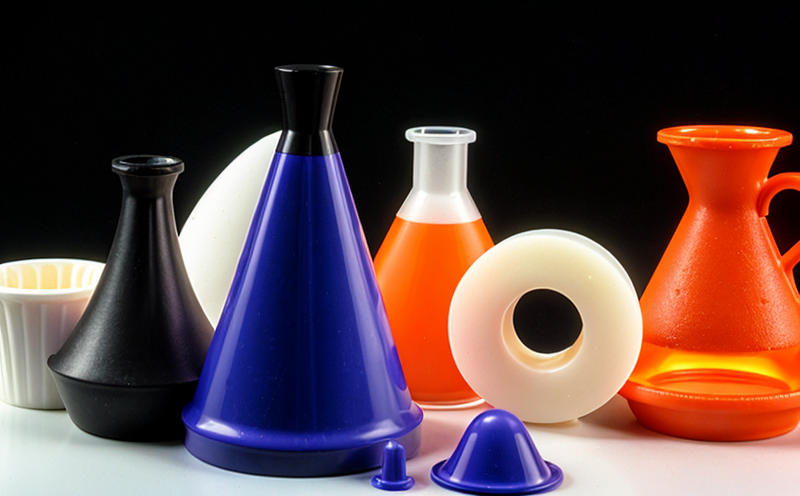Catheter Polymer Additive Testing
The process of catheter polymer additive testing is critical in ensuring that medical devices meet stringent quality and safety standards. This service involves the detailed analysis of polymers used in catheters, focusing on additives such as stabilizers, antioxidants, lubricants, and colorants to ensure optimal performance and biocompatibility.
The integrity and longevity of a catheter are heavily influenced by its polymer composition and the additives used during manufacturing. Additives play a crucial role in enhancing the mechanical properties, reducing friction, ensuring stability under various environmental conditions, and improving overall safety. Given the high stakes involved with medical devices such as catheters, rigorous testing is essential to identify potential risks early on.
The first step in this process involves selecting the appropriate polymers based on intended use. Commonly used polymers include polyvinyl chloride (PVC), silicone, and polyurethane. Each polymer has unique properties that make it suitable for different applications within a catheter. Once the polymer is selected, additives are incorporated into the formulation to impart specific characteristics like flexibility, durability, or biocompatibility.
Testing begins with sample preparation where each additive is carefully measured and mixed according to its intended function in the final product. Samples are then subjected to various analytical techniques including Fourier Transform Infrared Spectroscopy (FTIR), Differential Scanning Calorimetry (DSC), and thermogravimetric analysis (TGA). These methods help determine the chemical structure, thermal stability, and degradation behavior of the additives.
Further tests include mechanical testing such as tensile strength, flexural modulus, and impact resistance. These parameters are crucial for assessing how well the catheter will perform under typical usage conditions. Additionally, biocompatibility assessments are conducted to ensure that no adverse reactions occur when the catheter comes into contact with bodily fluids or tissues.
Finally, accelerated aging tests simulate long-term storage and use environments to evaluate the durability of both polymers and additives over time. This helps predict potential issues before they become critical problems in real-world applications.
The combination of advanced analytical techniques and rigorous testing ensures that catheters are safe, effective, and durable throughout their lifecycle. By adhering strictly to international standards like ISO 10993 for biocompatibility testing or ASTM D6472 regarding polymer characterization, our laboratory guarantees accurate results backed by proven methodologies.
Applied Standards
In the realm of catheter polymer additive testing, adherence to recognized standards is paramount. These guidelines provide a framework ensuring consistency and reliability across all tests conducted within our facility.
- ISO 10993-10: This standard sets out general requirements for biocompatibility evaluation of medical devices. It covers various aspects including toxicity, sensitization, irritation, and cytotoxicity assessments which are essential when dealing with materials that come into direct contact with human tissues.
- ASTM D6472: Known as Standard Practice for Identification of Polymers by Infrared Spectroscopy, this standard provides a method to identify polymers through their infrared spectra. This is particularly useful during initial stages of sample preparation when determining which polymer type has been used in the catheter construction.
- ISO 17468: Deals specifically with the determination of mechanical properties of thermoplastics under defined conditions. Mechanical performance data derived from these tests form an integral part of our comprehensive evaluation process for catheters made from various polymer types.
By following these internationally accepted protocols, we ensure that every aspect of catheter design and manufacturing is thoroughly examined to meet regulatory requirements and maintain high standards of patient safety.
International Acceptance and Recognition
The importance of international acceptance in the field of catheter polymer additive testing cannot be overstated. Our laboratory has earned a reputation for delivering accurate, reliable results that are universally recognized by regulatory bodies worldwide. This recognition stems from our commitment to adhering strictly to global standards while leveraging cutting-edge technology and experienced personnel.
Our testing methodologies comply with not only national regulations but also international norms such as those outlined in ISO, ASTM, EN, IEC, etc., ensuring consistency across borders. This broad acceptance means that any data generated during our tests can be used confidently by manufacturers seeking to penetrate diverse markets globally.
The recognition we enjoy extends beyond mere compliance; it reflects a deep understanding of the challenges faced by innovators in the medical device industry today. With ongoing developments in materials science and biotechnology, keeping pace with these advancements requires constant refinement of our testing protocols. Our team stays updated on latest trends through continuous training and collaboration with leading experts from around the globe.
This international perspective allows us to offer customized solutions tailored specifically towards meeting unique regional requirements or addressing specific concerns raised by clients operating in different geographical locations.





